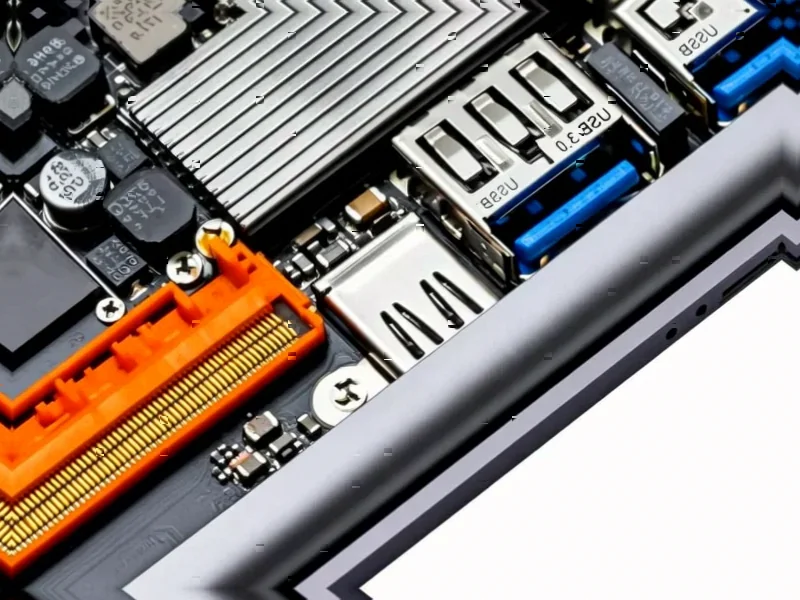According to Phoronix, Canonical has announced that Ubuntu 25.10 will ship with x86_64-v3 architecture variants alongside traditional x86_64 packages, marking a significant shift in Linux distribution strategy. The move targets performance optimization for CPUs manufactured in the past decade, specifically those supporting advanced instruction sets like AVX, AVX2, BMI1, BMI2, and F16C. This architectural split will allow Ubuntu to leverage modern CPU capabilities while maintaining backward compatibility through traditional packages. The announcement comes as part of Ubuntu’s ongoing efforts to balance performance gains with broad hardware support across its user base.
Table of Contents
The Performance Reality Behind x86_64-v3
While the technical specifications might sound abstract to average users, the performance implications are substantial. The x86_64-v3 baseline represents CPUs from approximately 2015 onward, including Intel Haswell and AMD Excavator architectures and newer. These processors support advanced vector extensions that can dramatically accelerate mathematical operations, media processing, and scientific computing. In practical terms, applications compiled for x86_64-v3 could see performance improvements of 10-30% in workloads that leverage these instruction sets, particularly in areas like video encoding, machine learning inference, and data compression. The benchmarking community, including tools like the Phoronix Test Suite, will likely see immediate benefits in automated testing scenarios.
The Compatibility Challenge Linux Faces
This architectural split creates a fundamental tension between performance optimization and universal compatibility that has defined Linux distributions for decades. While most desktop and server hardware from the past decade will benefit, older systems—including many embedded devices, legacy servers, and budget computers—could face compatibility issues. This move essentially creates a performance tier system within the same distribution, something that goes against the “one size fits all” philosophy that has made Ubuntu successful. The decision to maintain parallel package streams shows Canonical understands this risk, but it raises questions about how long traditional x86_64 support will continue as the default.
Broader Industry Implications
Ubuntu’s move reflects a larger industry trend toward specialized binaries for different performance tiers. We’ve seen similar approaches in the gaming industry with console-specific optimizations and in cloud computing with instance-specific builds. What makes this significant is that Ubuntu, as one of the most widely deployed Linux distributions, is effectively setting a precedent that other distributions may follow. If successful, we could see Fedora, Debian, and enterprise distributions adopting similar tiered architecture support. This could accelerate the retirement of truly ancient hardware from official support while giving modern systems the performance benefits they deserve.
What This Means for Developers
For the development community, this architectural split introduces new complexity in packaging and testing. Developers will need to consider whether to target the broader compatibility of traditional x86_64 or optimize for the performance benefits of x86_64-v3. The build infrastructure and continuous integration systems will need to handle multiple architecture targets, and testing matrices will expand accordingly. However, the performance payoff could be substantial for applications that can leverage the advanced instruction sets, particularly in scientific computing, data analytics, and multimedia applications where every percentage of performance matters.
The Road Ahead for Linux Performance
Looking forward, this move suggests we’re entering an era where Linux distributions will increasingly optimize for performance over universal compatibility. The x86_64-v3 baseline is just the beginning—we can expect future iterations targeting even newer instruction sets as hardware continues to evolve. The success of this approach will depend on how well Canonical manages the transition and whether the performance benefits prove compelling enough to justify the complexity. If Ubuntu 25.10 demonstrates clear performance advantages without significant compatibility issues, it could mark the beginning of a new performance-focused chapter for desktop and server Linux distributions.
Related Articles You May Find Interesting
- Nicheformer: The AI That Sees Biology in 3D
- Bacterial Resistance Mechanism Turned Against Itself in TB Breakthrough
- Ptychography’s Multi-Wavelength Revolution in Imaging
- Revolutionary Microgrid Controller Solves EV Integration Challenge
- UK’s £55bn R&D Boost Targets Quantum, AI, and Medical Breakthroughs



